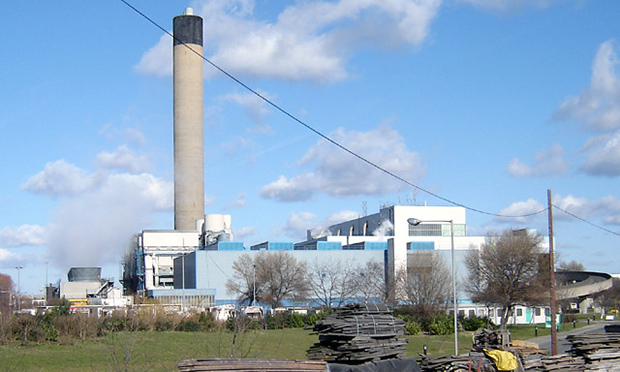‘No surprise’: More than 30 breaches of emissions limits at north London’s incinerator last year, new data shows

Incinerator, Edmonton. Photograph: Fin Fahey
North London’s ageing rubbish incinerator breached legal emissions limits more than 30 times last year.
In 2021/22, the incinerator in Edmonton, run by the North London Waste Authority (NLWA), recorded 31 incidents when it released too much organic carbon or carbon monoxide into the air.
This is double the number of breaches recorded at the plant the previous year, according to data obtained through a Freedom of Information request.
More than half of last year’s breaches were caused by a gas canister exploding, compared to only two such incidents the year before.
NLWA managing director Martin Capstick said gas canister explosions are a growing problem industry-wide, caused by people “irresponsibly” putting them in their household bin.
He said: “The incidents caused by gas canisters were very brief and caused a small spike [in emissions] for less than 30 minutes each time.
“The daily emissions were still under limits.
“It’s crucial that people understand that gas canisters can be lethal. They can explode in your home, in refuse trucks, at recycling facilities, at energy-from-waste facilities, in landfill, and likewise in a pre-sorting facility.
“People must dispose of canisters correctly. It may be that legislation is required.”
After each of the 18 explosions last year, the waste authority noted that it would “review” its inspection regime to see if “improvements” can be made to identify canisters before incineration.
Canisters are showing up more often in household waste, in part due to the growing popularity of using nitrous oxide as a recreational drug.
Aside from explosions, other reasons for the incinerator breaching legal limits last year included mechanical issues, broken filters, and burning “wet” waste.
The report said the incinerator stayed within legal limits for most other forms of pollution, such as nitrogen oxides, hydrogen chloride and sulphur dioxide.
Responding to the figures, Carina Millstone, spokesperson for the Stop the Edmonton Incinerator Now coalition, said: “There is a long history of breaching emissions limits at the Edmonton incinerator, so these latest breaches come as no surprise.
“They also show the urgent need for comprehensive pre-sorting of waste, both to avoid gas canisters in the incinerator but also to extract recyclates.
“Unfortunately, the NLWA seems determined to plough ahead with their plans for the new incinerator without a pre-sorting facility.”
The Environment Agency, which regulates the incinerator, says it reviews the emissions data collected by the authority and “takes enforcement action when necessary”.
A spokesperson for the government watchdog did not respond when asked whether or not it had taken enforcement action against the Edmonton incinerator in the past.
Martin Capstick said: “Energy-from-waste is one of the most regulated industries in the UK, with continuous monitoring and reporting to the Environment Agency mandated.
“The current facility was built in 1971, and that’s why construction is well underway to replace it.
“The new facility, which will begin operating in 2026, will have world-class technology to capture emissions and protect air quality, making it the safest and cleanest in the UK.”
